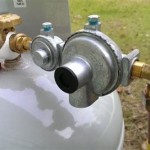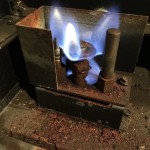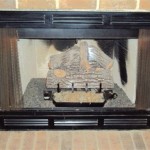Selecting and Applying Paint for Fireplace Inserts: A Comprehensive Guide
Fireplace inserts, designed to improve the efficiency and aesthetic appeal of existing fireplaces, are often constructed from materials capable of withstanding high temperatures. However, the original factory finish may eventually degrade or become undesirable. Repainting a fireplace insert can revitalize its appearance and protect its surface. The selection of an appropriate paint product and the proper application techniques are crucial for a successful and durable finish.
Several factors influence the choice of paint for a fireplace insert. Heat resistance is paramount, as standard paints will quickly blister, peel, and emit noxious fumes when exposed to the high temperatures generated by a burning fire. The material of the insert itself—typically cast iron, steel, or a ceramic composite—also dictates the type of paint that will adhere most effectively. Furthermore, the desired aesthetic qualities, such as color and finish (matte, satin, or gloss), must be considered.
Understanding High-Temperature Paint
High-temperature paints, often referred to as stove paints or fireplace paints, are specifically formulated to withstand the extreme heat generated by fireplaces and wood stoves. These paints are typically made from a combination of heat-resistant resins, pigments, and binders. The resins provide the paint film with flexibility and adhesion, while the pigments impart color and contribute to heat resistance. The binders hold the pigments together and ensure proper flow and leveling of the paint.
There are primarily two types of high-temperature paints available: aerosol spray paints and brush-on paints. Aerosol spray paints offer convenience and ease of application, especially for intricate surfaces. They typically dry quickly and provide a uniform finish. Brush-on paints, on the other hand, may offer greater control over the application process and are generally available in a wider range of colors. However, they may require more skill to apply evenly and are more prone to brush marks.
The heat resistance of high-temperature paints is specified by a temperature rating, usually expressed in degrees Fahrenheit or Celsius. It is essential to select a paint with a temperature rating that exceeds the maximum temperature expected to be reached by the fireplace insert. For most wood-burning fireplace inserts, a paint rated for at least 1200°F (649°C) is recommended. Gas fireplace inserts generally operate at lower temperatures, so a paint rated for 500°F (260°C) may be sufficient. Always consult the fireplace insert manufacturer's specifications for the recommended temperature rating.
High-temperature paints are available in a variety of formulations, including silicone-based, ceramic-based, and resin-based paints. Silicone-based paints are known for their excellent heat resistance and flexibility. Ceramic-based paints offer superior durability and resistance to abrasion. Resin-based paints are often more affordable and provide good overall performance for moderate-temperature applications.
Preparing the Fireplace Insert for Painting
Proper preparation is critical for achieving a durable and aesthetically pleasing paint finish. The surface of the fireplace insert must be thoroughly cleaned and prepared to ensure proper adhesion of the paint. Failure to adequately prepare the surface can result in peeling, cracking, and premature failure of the paint film.
The first step in the preparation process is to remove any loose rust, scale, or old paint. This can be accomplished using a wire brush, sandpaper, or a scraper. Power tools, such as a wire wheel or a sanding disc, can be used to expedite the process, but caution should be exercised to avoid damaging the underlying metal. For heavily rusted or scaled surfaces, chemical rust removers or sandblasting may be necessary.
Once the loose debris has been removed, the surface should be thoroughly cleaned to remove any grease, oil, soot, or other contaminants. A degreasing cleaner specifically designed for metal surfaces is recommended. Apply the cleaner according to the manufacturer's instructions and rinse thoroughly with clean water. Ensure the surface is completely dry before proceeding to the next step.
After cleaning, abrade the surface with fine-grit sandpaper (e.g., 220-grit). This will create a slightly textured surface that will promote better adhesion of the paint. Sand in a circular motion to avoid creating deep scratches. Wipe the surface with a tack cloth or a clean, lint-free cloth to remove any sanding dust. If the fireplace insert has a glossy or smooth surface, applying a primer specifically designed for high-temperature applications may be beneficial. The primer will provide a better bond between the existing surface and the new paint. Allow the primer to dry completely according to the manufacturer's instructions.
Mask off any areas that are not to be painted, such as glass doors, trim, or surrounding brickwork. Use painter's tape and masking paper or plastic sheeting to protect these areas from overspray or drips. Ensure the masking material is securely adhered to the surface to prevent paint from seeping underneath.
Applying the High-Temperature Paint
Proper application techniques are essential for achieving a smooth, uniform, and durable paint finish. Before applying the paint, read and follow the manufacturer's instructions carefully. Pay particular attention to the recommended application temperature, drying time, and number of coats.
If using an aerosol spray paint, shake the can vigorously for at least two minutes to ensure the paint is thoroughly mixed. Hold the can approximately 10-12 inches from the surface and apply the paint in thin, even strokes. Overlapping each stroke slightly will help to avoid streaks and ensure complete coverage. Avoid applying thick coats of paint, as this can lead to runs, drips, and uneven drying. It is better to apply multiple thin coats than one thick coat.
If using a brush-on paint, use a high-quality brush specifically designed for use with high-temperature paints. Dip the brush into the paint and remove any excess paint by wiping it on the edge of the can. Apply the paint in smooth, even strokes, following the grain of the metal. Avoid applying too much pressure, as this can cause brush marks. Work in small sections and overlap each section slightly to ensure complete coverage. Remove any drips or runs immediately with a clean brush.
Allow each coat of paint to dry completely according to the manufacturer's instructions before applying the next coat. Most high-temperature paints require at least two coats for optimal coverage and durability. For heavily worn or rusted surfaces, three or more coats may be necessary. Once the final coat has dried completely, remove the masking material carefully. Inspect the painted surface for any imperfections, such as drips, runs, or missed spots. Touch up any imperfections with a small brush or a cotton swab.
After the paint has dried completely, most high-temperature paints require a curing process to achieve maximum heat resistance and durability. The curing process typically involves heating the fireplace insert to a specific temperature and holding it at that temperature for a specified period of time. Consult the paint manufacturer's instructions for the recommended curing procedure. Typically, the curing process involves a series of heat cycles. The first cycle involves heating the insert to a lower temperature (e.g., 250°F) for a short period (e.g., 30 minutes). Subsequent cycles involve gradually increasing the temperature and duration. This process allows the paint to fully harden and bond to the metal surface.
Ventilate the area well during the curing process, as the paint may emit odors or fumes. Avoid touching or scratching the painted surface during the curing process, as the paint may still be soft and susceptible to damage. Once the curing process is complete, the fireplace insert is ready for use.
Properly selected and applied high-temperature paint will significantly extend the life and improve the appearance of a fireplace insert. The steps outlined above will help ensure a professional and long-lasting finish.

How To Spray Paint A Brass Fireplace Insert Erfly House

How To Spray Paint A Brass Fireplace Insert Inserts Diy Projects Improve Your Home

How To Paint A Brick Fireplace Young House Love

How To Spray Paint A Brass Fireplace Bright Green Door

Fireplace Makeover Spray Paint Magic

Diy Fireplace Makeover With High Heat Paint Jessica Welling Interiors

How To Paint The Inside Of A Fireplace Simple Upgrade Maria Louise Design

Wood Burning Insert Fireplace Makeover

How To Spray Paint A Brass Fireplace Bright Green Door

Brass Fireplace Makeover Brick Remodel Home
Related Posts








